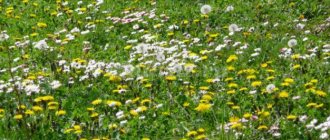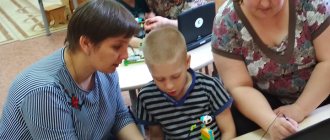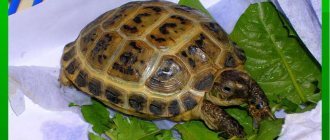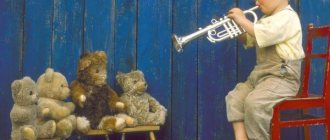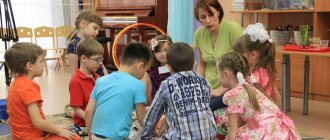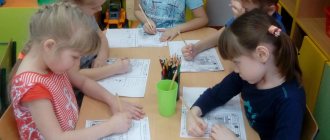Consultation on the topic: “Organization and conduct of targeted walks and excursions in the summer”
“Tell me and I’ll forget!” Show me and I will remember! Let me do it myself and I’ll understand!” - said the classic of pedagogy K. Ushinsky. These words can fully be attributed to organized educational activities - excursions.
Excursions are a special form of organized educational activity, its advantage over other types of educational activities is that they allow children to learn about objects and phenomena of nature, objects of the man-made world and human activity in a natural setting. During the excursions, the foundation of specific ideas about the world around us is laid.
According to the content of the excursions, they are divided into :
- natural history educational excursions;
- excursions to familiarize yourself with the work of adults;
- excursion for the purpose of developing aesthetic feelings (to a museum, to an exhibition);
- introductory tour (targeted walk) along the street.
Starting from the second junior group, targeted walks are conducted around the site and territory of the preschool educational institution. Excursions outside the territory of the preschool educational institution are conducted with children starting from the middle group.
In order for the work on cognitive development to be fruitful, it is recommended to conduct excursions at least once a month.
It is advisable to conduct nature excursions to the same places at different times of the year in order to show children the seasonal changes that occur in nature. Children get acquainted with all the richness of its colors, sounds, smells, forms in development and change.
The success of the excursion depends on the careful preparation of the teacher and children. The preparation of the teacher consists, first of all, in determining the purpose of the excursion and its content. When planning an excursion, the teacher focuses on the features of the surrounding area (natural object) or the technological process of the excursion object. When determining the place of the excursion, the teacher chooses the best path to it - not tiring, not distracting the children from the intended goal. When determining the distance to the excursion site, one should proceed from the physical capabilities of the children. The duration of the journey to the chosen place (one way) should not exceed 30 minutes in the middle group, 40-50 minutes in the senior and preparatory groups. In this case, you should take into account the characteristics of the road and weather conditions. The plan and route are agreed upon with the head, senior teacher and health worker.
The content of the event is clearly planned and the appropriate equipment is selected. The set of necessary equipment includes light individual backpacks, fresh drinking water, disposable cups for the number of children and adults, soap, napkins, attributes for organizing educational games and independent activities for preschoolers. In case you need to clean up the parking area, it is worth taking small rakes, shovels and garbage bags with you.
Be sure to have a first aid kit. Every adult accompanying a group of children must know its contents well and be able to use it.
Adults accompanying children during the excursion must be well aware of and follow safety rules (traffic, at work). When visiting a production facility, it is necessary to obtain permission to conduct an excursion and discuss the course of the excursion with the responsible representative, determine the content of the conversation between workers and children. No matter how familiar the teacher is with the place of the excursion, it is necessary to inspect it a day or two before it. Having visited the site of the future excursion, the teacher clarifies the route, finds the necessary objects, outlines the content and scope of the knowledge that children should receive about a given range of phenomena and objects, the sequence of individual parts of the excursion, establishes places for collective and independent observations, and for children to relax.
The uniqueness of excursions to familiarize adults with the work is that children observe human labor activity and the technological process. In the main part of the excursion, it is necessary to show children what people do and for what purpose, what machines are used, how they treat work, how they care about good results of work.
In order for the excursion to be interesting, the teacher needs to prepare poems, riddles, proverbs, and game techniques.
Preparing children begins with the teacher telling them the purpose of the excursion. The guys need to know where they will go, why, what they will learn, what they need to collect. The teacher reminds children about the rules of behavior on the street, in nature or at a production facility, in public places. When preparing for an excursion, you need to pay attention to the clothes of children. Children should be dressed comfortably, in accordance with the weather and season.
Methodology for conducting natural history educational excursions.
A natural history excursion includes an introductory conversation, collective observation, individual independent observation of children, collection of natural history material, and children playing with the collected material. The order of the parts varies depending on the purpose of the excursion and the season. Having brought the children to the place of the excursion, you should remind them of its purpose in a short conversation and let the children look around. The main part of the excursion is collective observation, with the help of which all the main tasks of the excursion are solved. The teacher must help children notice and understand the characteristic signs of objects and phenomena. To do this, you can use various techniques: questions, riddles, comparisons, survey activities, games, stories, explanations. Didactic games conducted during excursions should be focused on providing preschoolers with the opportunity to demonstrate an active, environmentally literate position in relation to natural objects. Topics can be the following: “Help the tree”, “Be careful, ant”, “Birds love silence”, “Good morning”, etc.
Small environmental actions expand the experience of environmental protection activities, support the desire to actively and independently provide assistance to natural objects, and allow you to experience a sense of pride from the work performed. During excursions to a square, park, or pond, children, together with adults, can hang bird feeders, plant grown seedlings in flower beds and flower beds, plant trees, etc. The most significant thing is that during these activities, preschoolers accumulate emotionally positive communication experience with nature.
At the end of the main part, children are given the opportunity to satisfy their curiosity in individual independent observations and collection of natural history material. However, one should not forget about nature conservation; the collection of material should be strictly limited and carried out under the guidance or with the direct participation of a teacher.
During children's rest, games and play exercises are held. Children consolidate knowledge about the characteristic features of an object, express in words an opinion about the quality of the object, remember the name of plants (“Guess by the smell”, “Find out by the description”, “Which branch are the children from?”).
In the final part of the excursion, the teacher once again draws the children’s attention to the overall picture of nature.
The main goal of the final stage is to summarize the excursion work. Creative tasks will allow the child to express his impressions and show his attitude to what he sees. You can invite the children, together with the teacher, to create little books from the drawings. Or after a nature excursion, for example, preschoolers can compose a story about the park and imagine what tales an old spruce tree could tell them. As an option for creative tasks, the teacher offers the creation of collective collages depicting above-water and underwater inhabitants of reservoirs or professions, etc. Constructing ecosystem models from natural and waste materials will help children better understand the chain of relationships and interdependencies that exist in nature. The street layout can be used in teaching traffic rules. After each excursion, the layout can be supplemented and transformed. Based on specific information, children build technological chains, add new natural or technological objects, etc.
When conducting a targeted walk with younger preschoolers, you can choose one object for observation in the preschool area, for example, a rowan tree, and take targeted walks in different seasons, observing and noting the changes that have occurred.
During rest, the collected material is sorted, laid out, and used for games and exercises. In games: “recognize by smell”, “recognize by description”, “find a plant by leaf”, “branch, branch, where is your baby?” - children consolidate knowledge about the characteristic features of objects, express their quality in words, remember the names of plants and their parts.
Agricultural excursions are varied: to the field, to the meadow, to the garden, to the vegetable garden, to the greenhouse, etc. Such excursions provide an opportunity to clearly show how humans influence nature, how they grow plants and animals.
Targeted walks , unlike excursions, are short-term, and a small volume of problems is solved during them. Children get acquainted with the striking natural phenomena of a particular season: bird nesting, ice drift. Targeted walks are carried out to a pond and a meadow. You can choose one object for observation in the kindergarten area, for example, a birch tree, and take targeted walks in different seasons, observing and noting the changes that have occurred. Thus, excursions and targeted walks help to form preschoolers’ ideas about the world around them. These forms of work allow children to develop skills in behavior in nature, develop the ability to be surprised and surprised, cultivate an interested and caring attitude towards the environment, and introduce them to the sights of their native village.
Memo-template for preparing and conducting an excursion, a targeted walk outside the kindergarten territory
Notify the administration of the preschool educational institution about the planned excursion, target walk no later than three working days (head, senior teacher), and do not forget to indicate this organization of joint activities in the calendar planning.
Immediately before the excursion 2-3 days
1. Preliminarily familiarize yourself with the object of observation.
2. Obtain permission to conduct an excursion at a designated place (if it is associated with an institution, enterprise, organization, etc.)
3. Agree on a time to visit.
4. Inspect the excursion site for safety.
5. Choose the easiest and safest route, taking into account the road features and weather conditions
6. Tell the children about the purpose of the excursion (the children should know where they will go, why, what they need to know, what to collect.)
7. Remind children about the rules of behavior on the street, in public places (you need to be disciplined and attentive)
8. Warn parents about the upcoming excursion and invite them to take part in a joint event.
9. Read again the “Instructions for educators on protecting the life and health of pupils on exercise areas, during targeted walks and excursions, and work in the vegetable garden, in the flower garden”
10. On the day of the excursion, do about
Immediately before leaving for the excursion:
1. Pay attention to the children’s clothes (they should be comfortable, appropriate for the weather and season)
2. Check the list of children before going on an excursion.
3. Bring child safety flags with you.
4. To make the path interesting, prepare poems, riddles, and game techniques in advance.
5. Having arrived at the excursion site, remind the children again of the goal and let them look around.
6. In the final part of the excursion, summarize the work, thank the hosts, parents and children for holding the event.
7. Check the list of children and go back.
8. Upon returning to the preschool educational institution, offer the children creative tasks (to draw, prepare stories for pupils of other groups who did not go on the excursion, parents). This will allow the child to express his impressions of visiting the object of observation, train his memory and promotes the development of coherent speech in your pupils .
Progress of observation: Only golden autumn
The leaf is scorched by fire -
The birch tree flies around,
Feels sad in the rain.
The teacher conducts a conversation with the children: Why did the leaves on the trees turn yellow? What happens to trees in autumn ?
How do trees prepare for winter?
In autumn, the leaves on the trees begin to turn yellow, first at the top, where the air is colder, and then at the bottom. The wind blows, tears off the leaves, and they, like gold coins, fall onto the dark damp ground. Invite the children to collect a bouquet of fallen leaves and note what color the leaves are.
Labor activity: Sweeping paths, collecting garbage.
Goals: to cultivate diligence, the ability to work together; put away equipment after work in a certain place.
Outdoor games: “We are funny guys”
,
"Entertainers"
.
Goals: to teach to follow the rules of the game, to act quickly and deftly;
practice running.
Didactic game: Guess what's in the bag? Purpose: to teach children to describe objects perceived by touch and guess them by their characteristic features.
Individual work: Did. game “What do we take in the basket?”
Goal: to consolidate in children the knowledge of what crops are harvested in the field, in the garden, in the garden, in the forest.
Independent games with external materials, toys, attributes for outdoor games.
Walk 5 . Observing changes in nature with the arrival of late autumn .
Goals: continue observing changes in nature with the arrival of late autumn , promote speech development by enriching vocabulary; cultivate a caring and caring attitude towards the environment and nature
Progress of observation: Powerful transport - truck
I'm used to carrying heavy loads.
What does a car need a body for?
To carry cargo in it!
The teacher asks the children questions: What are trucks for? What are they transporting? Name some types of trucks and explain what they are needed for? Which car do you think is more difficult to drive - a truck or a car?
Labor activity: Cleaning up fallen leaves.
Goals: to teach you to finish what you start; cultivate accuracy and responsibility.
Outdoor games: “Traps”
,
“Children and the Wolf”
. Goals: to teach to follow the rules of the game, to act on the teacher’s signal; develop dexterity.
Didactic game: “Healthy Products”
Goal: to consolidate knowledge about healthy and unhealthy foods, to cultivate a desire to take care of your health.
Individual work: Walking on a log. Goal: to improve walking technique while maintaining balance
Independent games with external materials, toys, balls
Walk 6 . Observation of mountain ash.
Goal: continue to introduce children to rowan.
